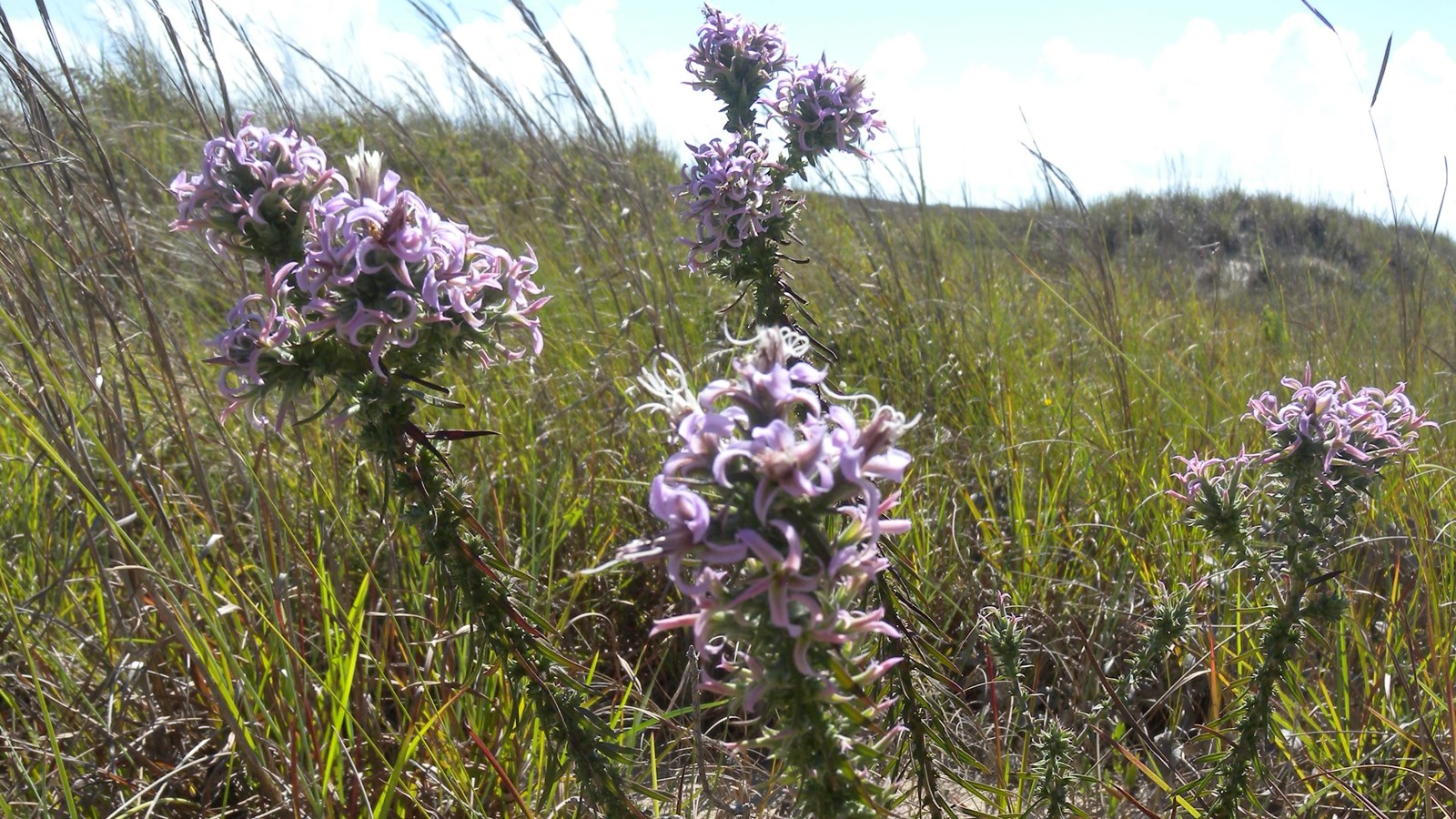Last updated: March 9, 2024
Place
Stop 6: Elegant Gayfeather (Liatris elegans)

Scenic View/Photo Spot, Wheelchair Accessible
Common Name: Elegant Gayfeather
Scientific Name: Liatris elegans
Family Name: Asteraceae
Duration: Perennial
Size: Up to about 4 feet tall
Leaf Arrangement: Alternate
Blooming Months: Summer, Fall
Distribution: AL, AR, FL, GA, LA, MS, OK, SC, TX
General Description
The elegant gayfeather, Liatris elegans, is one of the island’s most attractive and showy species of wildflowers. It goes by a variety of names, those of which include pinkscale gayfeather, white bract blazing star, handsome blazing star, and white featherflower. The flowering part of the plant creates a cylindrical cluster of flowers that sprout various shades of white and purple and surround the stalk on all sides. The flowers bloom from late summer until early winter, and the seeds are typically dispersed through wind.
Park Wildlife Ecology/Connections
This plant is very valuable for pollinating wildlife, such as butterflies and day flying moths. Liatris elegans plants attract large numbers of native bees to support the vegetation in flowering, and the plant is also incredibly important as a nectar source for migrating monarch butterflies during the fall months. In the spring and summer seasons, deer will eat the foliage of the elegant gayfeather.
North American Ethnobotany
Limited information about the historical and cultural uses of the Elegant gayfeather has been recorded in common text sources. This does not mean that Native American people did not use it, only that information regarding its use is not as circulated. Plants in the same genus of Liatris have been used by Native American people, like the Koasati and Seminole people, for their antirheumatic properties. Two other species of Liatris, the Rattlesnake master and the Button snakeroot as they were referred to in the 19th century, were used by Confederate surgeons to treat sore throats, pain, coughs, colds, colic, and even snake bites. The documented usage of Rattlesnake master is also found at another NPS site; indigenous artifacts at Mammoth Cave National Park have been discovered inside the caves, including a piece of footwear made from the fibers of the Liatris plant.
